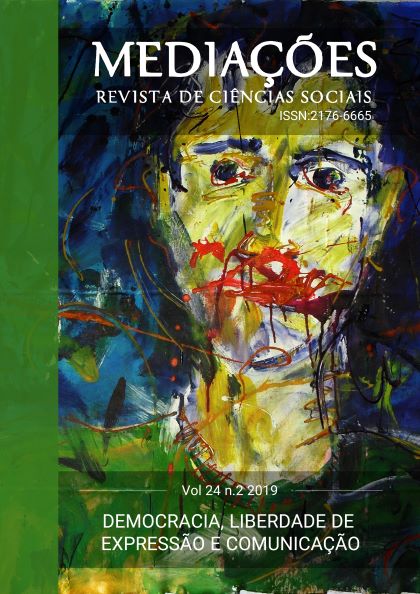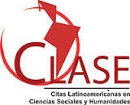Children and transmission lines in São Luís: Methodological perspectives of a research on children's representations
DOI:
https://doi.org/10.5433/2176-6665.2019v24n2p307Keywords:
Children, Transmission lines, Methodology, Representations, Children's protagonismAbstract
This article revisits the research carried out on the presence of communities in easement transmission line strips of Eletronorte in São Luís, to think over methodological perspectives in researches on children’s representations. Although children had not been considered on the initial project – which aimed to analyze the representations and relationships that rural communities of São Luís establish with Eletronorte’s equipment –, we were surprised by the children’s protagonist role. Therefore, considering children in the field has become fundamental to fully reach the research objectives, which is the discussion carried out in this article. In addition to a methodological analysis, we verified children’s representations of the equipment, the company and the easement strips, and we identified children’s actions based on these representations through techniques like informal conversations and drawings made by the children, thus composing an ethnography. Therefore, although the investigation is not defined as a research with or on children specifically, through this analytical approach, we demonstrated the importance of taking children as research subjects as any other field variable – men, women, elderly – otherwise, we do not fully understand a reality.Downloads
References
COHN, Clarice. A criança, o aprendizado e a socialização na antropologia. In: SILVA, Aracy Lopes da; NUNES, Ângela; MACEDO, Ana Vera Lopes da Silva (org.). Crianças indígenas: ensaios antropológicos. São Paulo: Global, 2002. (Antropologia e educação). v. 1, p. 213-235.
COHN, Clarice. Antropologia da criança. Rio de Janeiro: Jorge Zahar, 2005. (Coleção passo a passo, 57).
COHN, Gabriel. Weber: sociologia. 7. ed. São Paulo: Ática, 2004. (Coleção grandes cientistas sociais, n. 13).
DAMATTA, Roberto. A casa e a rua: espaço, cidadania, mulher e morte no Brasil. Rio de Janeiro: Rocco, 2000.
GEERTZ, Clifford. A interpretação das culturas. Rio de Janeiro: Editora Aplicada, 1989.
HARDMAN, Charlote. Can there be an anthropology of children? Journal of the Anthropological Society of Oxford, Oxford, v. 4, n. 2, p. 85-99, 1973.
HIRSCHFELD, Lawrence. Why don’t Anthropologists like Children? American Anthropologist, Washington, US, v. 104, n. 2, p. 611-627, 2002.
LÉVI-STRAUSS, Claude. O pensamento selvagem. Campinas, SP: Papirus, 1989.
MAGNANI, José Guilherme Cantor. Discurso e representação, ou de como os Baloma de Kiriwana podem reencarnar-se nas atuais pesquisas. In: CARDOSO, Ruth (org.). A aventura antropológica. Rio de Janeiro, Paz e Terra, 1986. p. 127-140.
MALINOWSKI, Bronislaw. Introdução: tema, método e objetivo desta pesquisa. In: Argonautas do Pacífico Ocidental: um relato do empreendimento e da aventura dos nativos nos arquipélagos da Nova Guiné Melanésia. São Paulo: Abril Cultural, 1978. p. 17-34. (Os pensadores).
MARTINS, José de Souza (coord.). O massacre dos inocentes: a criança sem infância no Brasil. 2. ed. São Paulo: Hucitec, 1993.
MEAD, Margareth. Children’s play style: potentialities and limitations of its use as cultural indicator. Anthropological Quarterly, Washington, US, v. 48, n. 3, Jul. 1975.
MORAES FILHO, Evaristo (org.). Simmel. São Paulo: Ática, 1983. (Coleção Grandes Cientistas Sociais).
OLIVEIRA, Roberto Cardoso de. O trabalho do antropólogo. 2. ed. São Paulo: Editora Unesp: Paralelo 15, 2000.
RODRIGUES, José Carlos. O tabu do corpo. Rio de Janeiro: Achiamé, 1983.
SOUSA, Emilene Leite de. Umbigos enterrados: corpo, pessoa e identidade Capuxu através da infância. Florianópolis: EDUFSC, 2017.
SOUZA FILHO, Benedito; ANDRADE, Maristela de Paula; SANT’ANA JÚNIOR, Horácio Antunes; NEVES, Ednalva Maciel (org.). Alta tensão: conflitos, representações e dinâmicas de uso e ocupação de faixas de servidão de linhas de transmissão da Eletronorte. São Luís: EDUFMA, 2006.
TASSINARI, Antonella Maria Imperatriz. Concepções indígenas de infância no Brasil. Revista Tellus, Campo Grande, MT, ano 7, n. 13, p. 11-25, out. 2007.
TASSINARI, Antonella Maria Imperatriz. Escola indígena: novos horizontes teóricos, novas fronteiras de educação. In: SILVA, Aracy Lopes da; FERREIRA, Mariana Kawal Leal (org.). Antropologia, história e educação: a questão indígena e a escola. 2. ed. São Paulo: Global, 2001. v. 1, p. 44-77.
TASSINARI, Antonella Maria Imperatriz; COHN, Clarice. Opening to the other: Schooling among the Karipuna and Mebengokré-Xikrin of Brazil. Anthropology & Education Quarterly, Washington, US, v. 40, n. 2, p. 150-169, Jun. 2009.
Downloads
Published
How to Cite
Issue
Section
License
Copyright on articles published in Mediações belongs to the author(s): in the case of partial or entire republication of the original publication, we ask author(s) to indicate the original publication in the periodical.
Mediações uses the Creative Commons Attribution 4.0 International license, which allows Open Access, enabling any user to read, download, copy and disseminate its content so long as adequately referenced.
The opinions expressed by the author(s) are their sole responsibility.
































